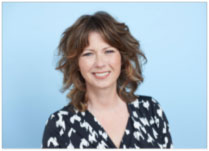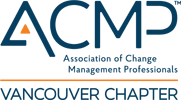Diversity, Equity and Inclusion – or DEI as it is known – is everywhere right now. The death of George Floyd fueled the Black Lives Matter movement and focused a spotlight on the need to dismantle institutional power that perpetuates racist, sexist, ageist, and homophobic thinking and actions. Through these events, many organizations have committed to create a more diverse, equitable and inclusive workplace.12
DEI is deep work that requires a skilled and thoughtful approach. The purpose of DEI is to dismantle existing power structures that privilege people that most closely represent the status quo based on their proximity to the white, able bodied, heterosexual male norm. The closer we are to this standard, the more power and privilege we experience. This standard originated from the time of the Age of Enlightenment an ideology which emphasized scientific approach and led to the development of taxonomy upon which the concept of “race” was developed.3
Changing our way of thinking to create social change seems daunting, but it is possible. How do we do this? Our workplaces reflect the power structures that exist in society. We can disrupt these structures through self-awareness and by taking actions that will help develop a change plan that aims to capture the perspective of everyone who works in the organization.
The first step is to develop self-awareness around our own power and privilege. Developing this awareness is important because as change managers we help shape organizational process through the tools and techniques we select to carry out our assessments and our engagements. We need to be aware of how our unconscious bias and the power we hold by virtue of our class, race, gender, ability and so on shapes our approach, ultimately shaping the change process.
Considering our own power and privilege requires some courage. You may be part of the dominant group that upholds this standard which perpetuates the reproduction of inequality. You may be part of the less dominant group who experience forms of oppression. You may also be dominant in one arena and marginalized in another. This experience represents how our identities intersect with different social structures and how power is attained or lessened in relation to the social value that is ascribed to that role.
One way to start this process of self-reflection is by undertaking a self-location exercise. This type of exercise can raise strong emotions about ourselves including feeling helpless and frustrated. This is okay. We cannot change our race or ethnic origin. What can change is how we see ourselves in relation to the dominant group and what actions we take to contribute to change. So, tune in to where you come from, who you are and how you identify yourself. This self-awareness is critical to social change. Here is an exercise to try:
https://projecthumanities.asu.edu/content/how-privileged-are-you. 4
Use this insight when you are thinking about change strategies. How will your power and privilege be enacted during the change process? What can you do to create a more even approach to the change activities?
The next step is, as Mahatma Gandhi stated, to “be the change you wish to see.” DEI is not the sole responsibility of Human Resources, rather it is an enterprise-wide change initiative that everyone in the organization has a responsibility towards. Take a step forward to learn more about DEI and what it looks like at work by joining a Meet Up or a group.
Diversity, equity and inclusion is a commitment made by leaders-and everyone- in the organization to ensure the myriad experiences of people who work there are expressed through a lens focused on equity and inclusion and diversity. This means that the different voices, points of view, experiences, and ways of being all contribute to the development of knowledge and how that knowledge is used to inform the work of the organization.
So, start with you. Understand your roots, explore where you came from and how you got to the place you are at and what you can do in your everyday and work life to stand up to inequities perpetuated by power imbalance.
 Carrie Elrick, MBA, MSW is a Diversity, Equity, and Inclusion Specialist. Her company, Project Rescuers helps organizations get their projects back on track and improve their organization by aligning culture, business strategy and methods.
Carrie Elrick, MBA, MSW is a Diversity, Equity, and Inclusion Specialist. Her company, Project Rescuers helps organizations get their projects back on track and improve their organization by aligning culture, business strategy and methods.
Carrie came up through the third wave of feminism which focused on issues such as reproductive rights, violence against women and pay equity. Her family originates from Europe and she lives with her husband and two children in a middle-class neighborhood in Victoria, BC.
Please join Carrie for a conversation about DEI in the workplace on April 14th, 2021, 4:3—5:30 pm. This is a free event. Register through Eventbrite.
Registration link:
https://www.eventbrite.ca/x/diversity-equity-and-inclusion-where-do-we-start-tickets
References:
1 Holvino, E., Ferdman, B. M., & Merrill-Sands, D. (2004). Creating and sustaining diversity and inclusion in organizations: Strategies and approaches.
2 In M. S. Stockdale & F. J. Crosby (Eds.), The psychology and management of workplace diversity (p. 245–276). Blackwell Publishing.
https://www.nytimes.com/interactive/2020/07/03/us/george-floyd-protests-crowd-size.html
3 Landson-Billings, G. (2000). Racialized discourses and ethnic epistemologies. In N. Denzin & Y. Lincoln (Eds.), Handbook of Qualitative Research pp. 257-pp.277. Thousand Oaks: Sage.
4 https://projecthumanities.asu.edu/content/how-privileged-are-you


